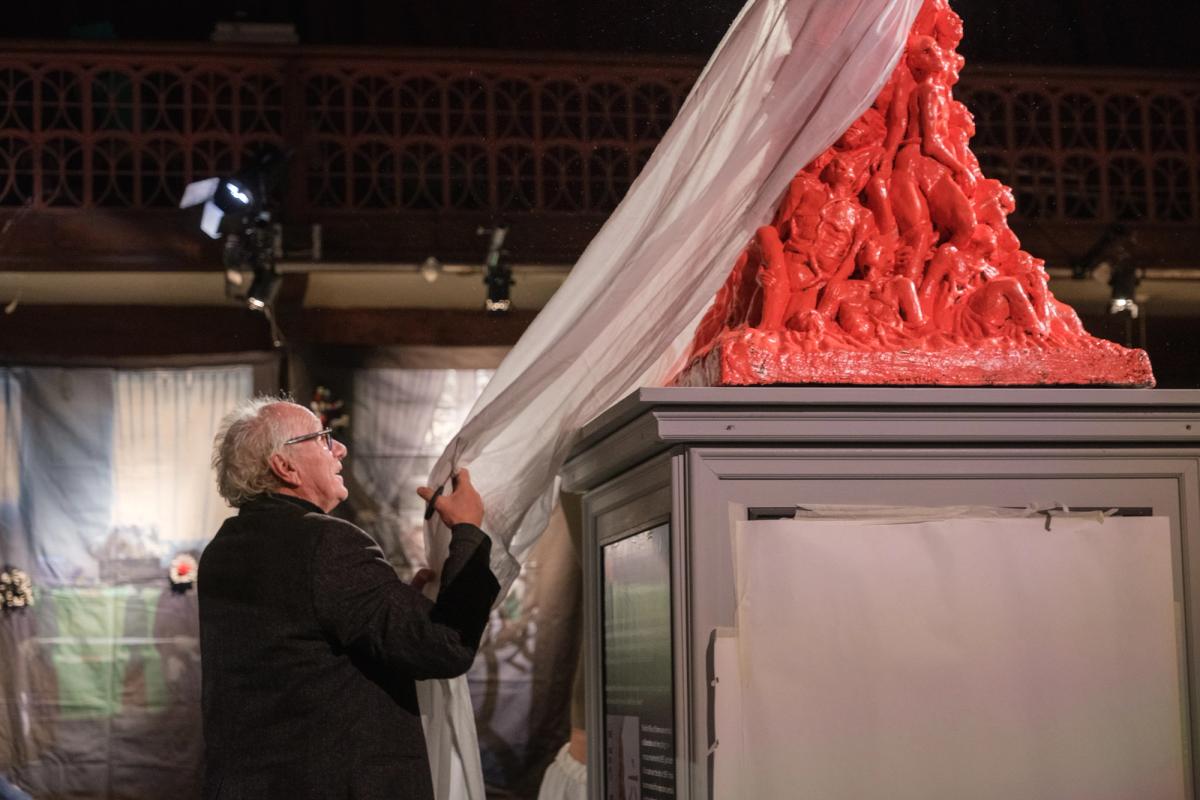A replica of a sculpture marking the Tiananmen Square massacre in Beijing in June 1989, which has been banned in Hong Kong, is on display in an exhibition in London exploring the issue of human rights across East Asia. Danish artist Jens Galschiøt’s Pillar of Shame (1997) monument depicts a mass of deformed bodies, evoking the protests in Tiananmen Square when protestors demonstrated for democracy (the number of people who died remains unclear).
The small-scale version of a Pillar of Shame forms part of the exhibition at the Union Chapel in Islington, A Canvas of Courage (until 10 December), which is organised by Amnesty International UK and the activist art platform Artvocate. Other artists featured in the exhibition, comprising 21 practitioners, include Lumli Lumlong, a Hong Kong painter now based in London who is showing the work Red Brick Wall People, and the UK artist James Earley who is showing the painting A Child of Iraq (2021).
Galschiøt’s sculpture was removed from the campus of the University of Hong Kong in December 2021. It was installed in 1997 shortly before the United Kingdom handed over rule of the former colony to China.
In May, the Hong Kong government released a statement saying that “the National Security Department of the Hong Kong Police Force conducted searches [on 5 May] with a warrant and seized an exhibit related to an 'incitement to subversion' case under the National Security Law”. The work seized is understood to be Pillar of Shame.
The National Security Law, introduced in June 2020 in Hong Kong, criminalises acts of secession, subversion of the state, terrorism and collusion with foreign forces. It was drafted by Beijing, bypassing Hong Kong’s legislature. The Hong Kong government stressed that freedom of expression was well-protected under the Basic Law (the Special Administrative Region's mini-constitution), and that the national security law only applies to “a tiny number of cases”.


